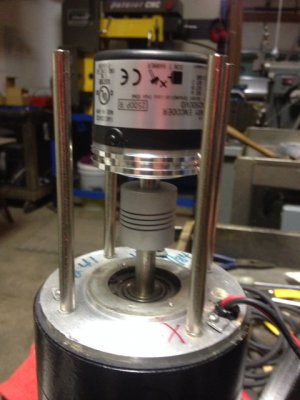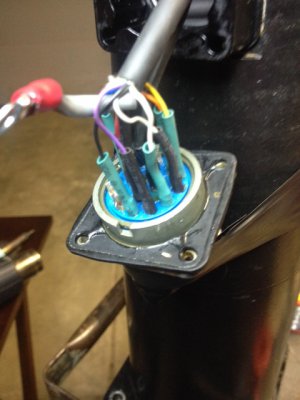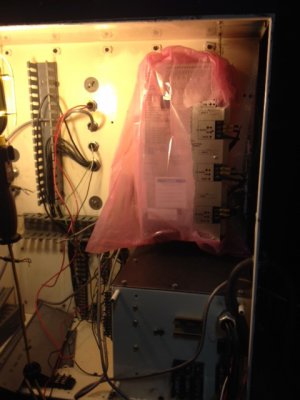- Joined
- May 7, 2014
- Messages
- 776
Hello All. Back from Business and a busy month. The son and I are now into the DC ServerMotor Power supply phase of our AjaxCNC conversion.
what I have: Is a .5KVA transformer that was mounted on the Mill. the best I can do on the AC outputs is 115Vac, a 63Vac leg or a 97Vac leg. (Taps). No Center.
What I need - The Motor DC Main Power In on the Ajax should = the Motor Vdc settings. So I need 100Vdc as listed on the motor itself. Amps is Max of 10A.
1) I see other sites that claim a .5Kva transformer will run 3 to 4 40in.Lb. motors. That just seems like a stretch - But I do not know! Transformers are not cheap! So that sets up two options or even others as you arrive at some feedback and do / do-nots for the Kid and I.
Part A) If I can use this Transformer: I can use the 63 tap and arrive at a DC value of 87-88Volts. (diode drops) or the 97Vac tap to arrive at 127-128VDc. (using a full wave rectifer and Cap kit). Neither seems to ideal? But I wondered what ya'll would think on either of these settings?
Part B) I good ol' best shore - Here is a 2Kva Variac, Max 20Amp setup from automation tech on sale for $104.... And give me my exact 71-72 Vac for the 100VDc out. I just do not know enough about Variac's and the output generated for DC rectification! Iassume these are some tupe of Triac I've long since forgotten the theory and application and not too if sure it can be used for my application. http://www.automationtechnologiesin...riable-ac-transformer/tdgc-2km-metered-variac
Part C) Some surplus Transformer place w/ 220 or 110 in, 70VAc out - and the KVA you think I'll need.... Uggg this keeps getting more and more $$$spensive'
Off I go - At least I can solder on the DB9 connectors! Thanks for any help! Good to be home. A few pics just to show off the kids work! He's also now learned to Solder and heat shrink really well. I'm impressed and yes bragging a bit! ;-)






what I have: Is a .5KVA transformer that was mounted on the Mill. the best I can do on the AC outputs is 115Vac, a 63Vac leg or a 97Vac leg. (Taps). No Center.
What I need - The Motor DC Main Power In on the Ajax should = the Motor Vdc settings. So I need 100Vdc as listed on the motor itself. Amps is Max of 10A.
1) I see other sites that claim a .5Kva transformer will run 3 to 4 40in.Lb. motors. That just seems like a stretch - But I do not know! Transformers are not cheap! So that sets up two options or even others as you arrive at some feedback and do / do-nots for the Kid and I.
Part A) If I can use this Transformer: I can use the 63 tap and arrive at a DC value of 87-88Volts. (diode drops) or the 97Vac tap to arrive at 127-128VDc. (using a full wave rectifer and Cap kit). Neither seems to ideal? But I wondered what ya'll would think on either of these settings?
Part B) I good ol' best shore - Here is a 2Kva Variac, Max 20Amp setup from automation tech on sale for $104.... And give me my exact 71-72 Vac for the 100VDc out. I just do not know enough about Variac's and the output generated for DC rectification! Iassume these are some tupe of Triac I've long since forgotten the theory and application and not too if sure it can be used for my application. http://www.automationtechnologiesin...riable-ac-transformer/tdgc-2km-metered-variac
Part C) Some surplus Transformer place w/ 220 or 110 in, 70VAc out - and the KVA you think I'll need.... Uggg this keeps getting more and more $$$spensive'
Off I go - At least I can solder on the DB9 connectors! Thanks for any help! Good to be home. A few pics just to show off the kids work! He's also now learned to Solder and heat shrink really well. I'm impressed and yes bragging a bit! ;-)







